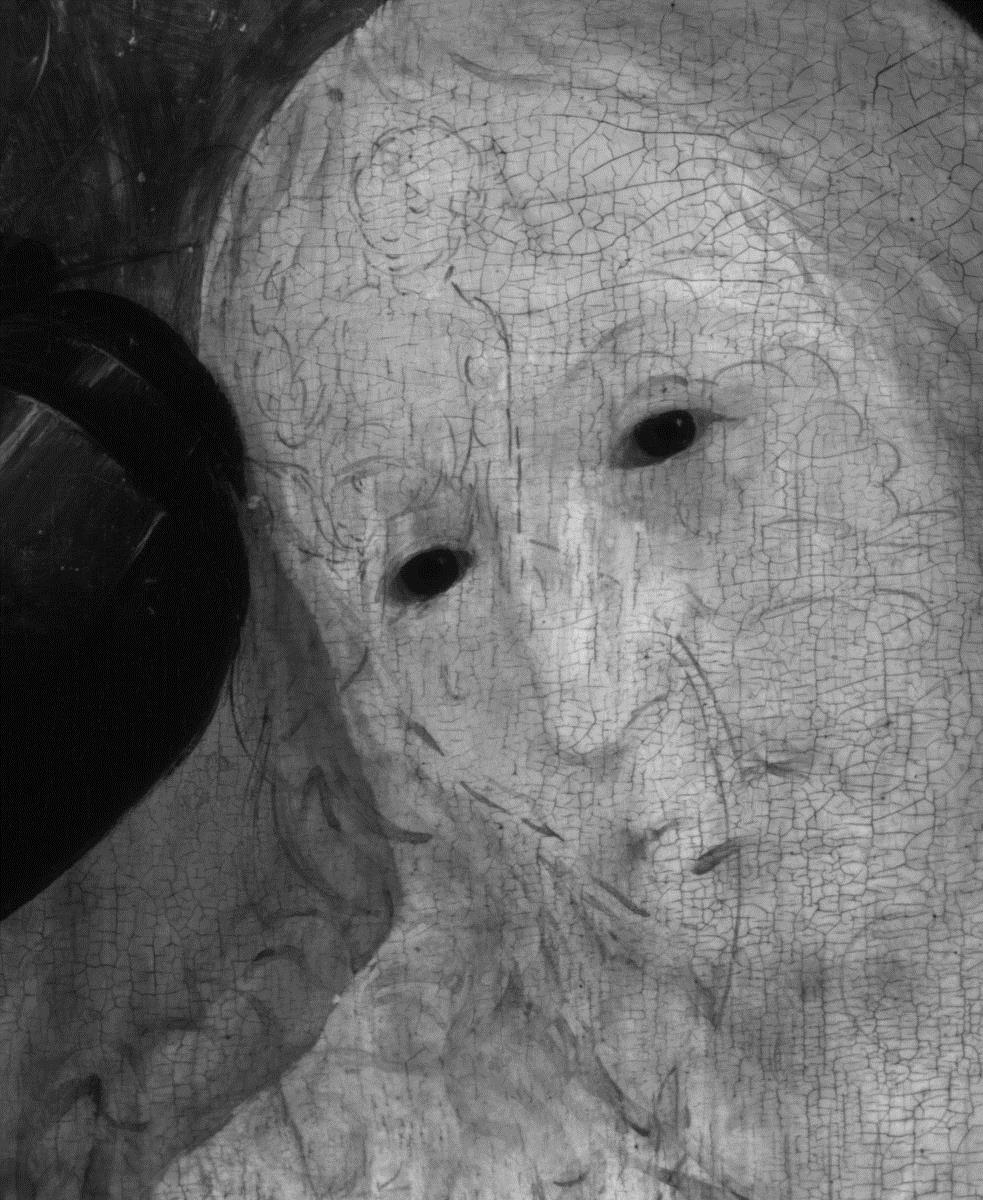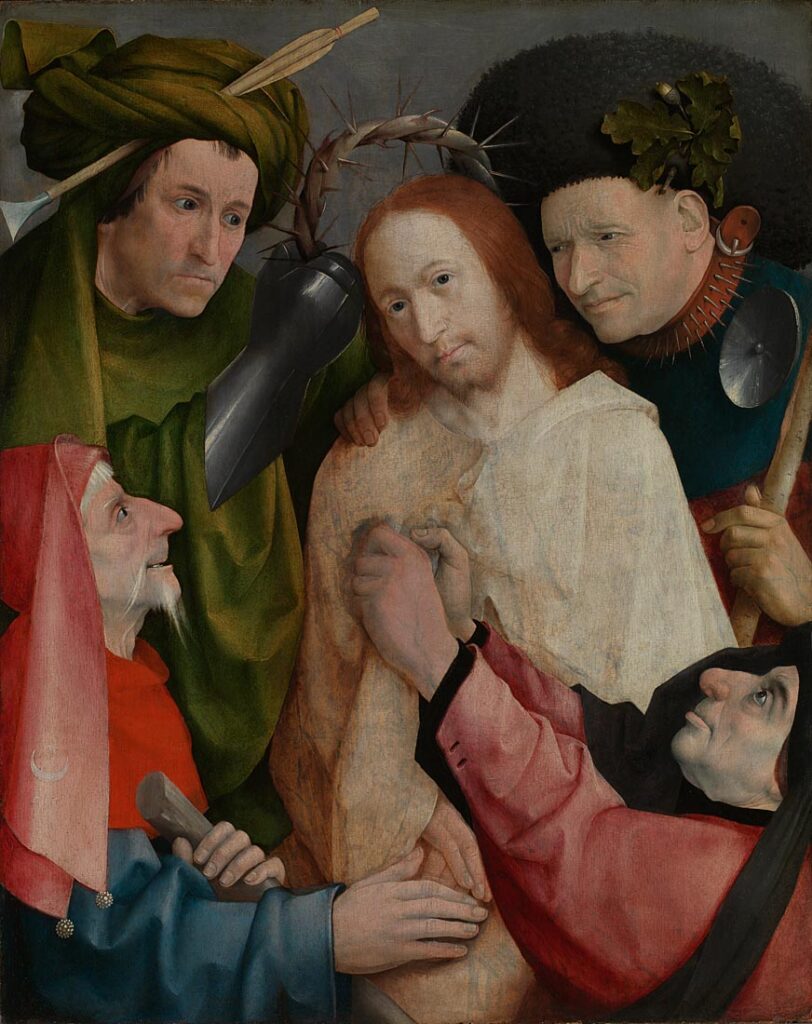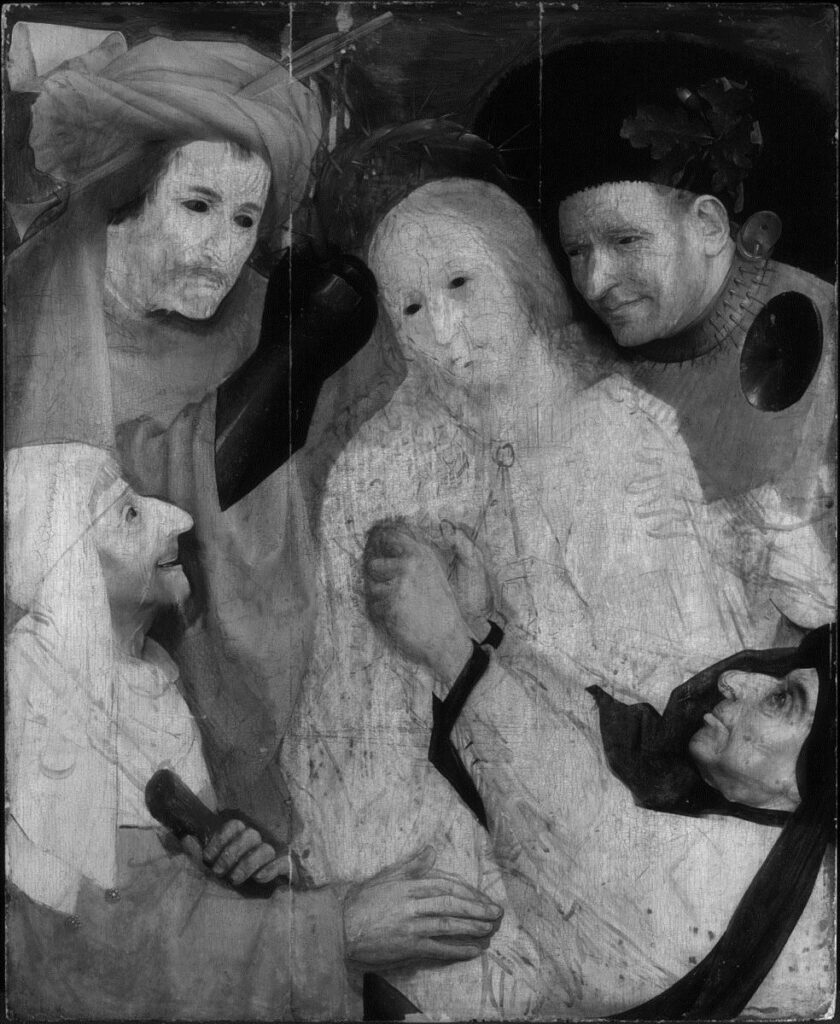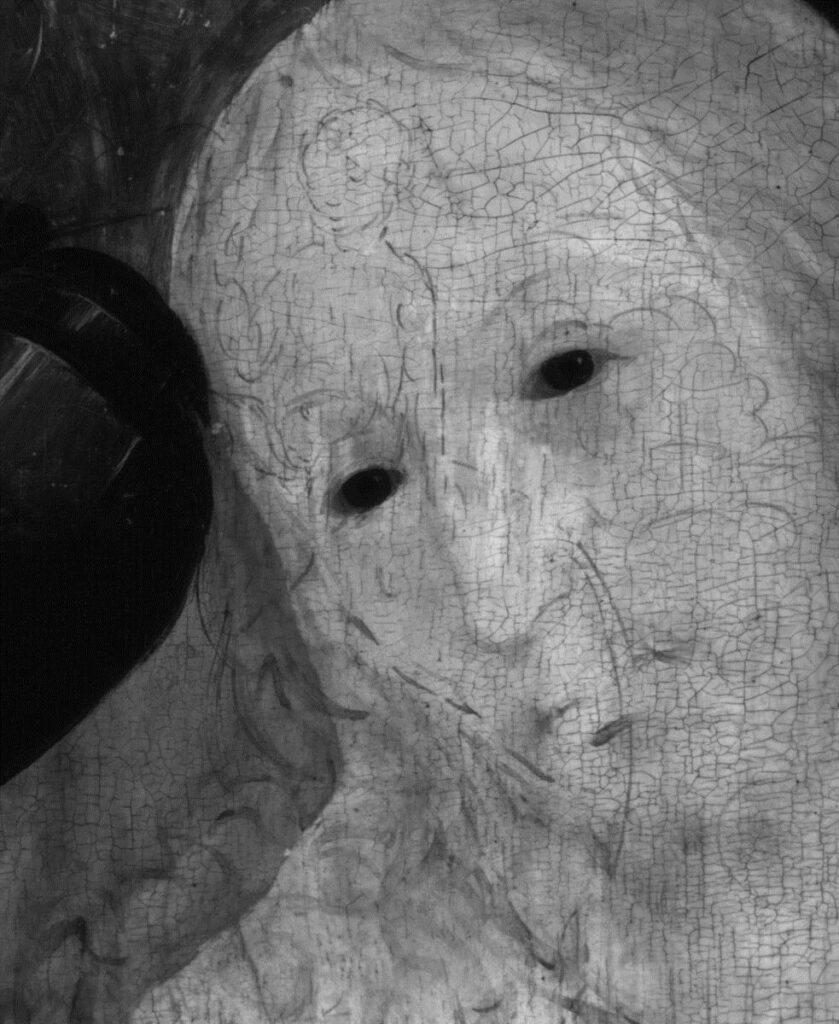
Infrared reflectogram, OSIRIS (InGaAs sensor), recorded 23rd February 2012.
By Lewis Brown
Hieronymus Bosch, about 1510, Oil on oak, (73.8 x 59 cm) NG4744
Author/s: Rachel Billinge (The National Gallery, London, Part 3 of 3)
So far we have seen evidence for how paintings were started and could be adjusted as they were being worked on, our last case study reveals something much more dramatic and totally unexpected.
“Christ Mocked” by Bosch is a fascinating composition, amazingly skilfully and beautifully painted. Looking at it in the Gallery it is possible to see, through the paint of the white robe Christ is wearing, some greyish-looking lines for folds, so a study with infrared was obviously going to be useful.
The resulting reflectogram shows a very free drawing outlining Christ and his persecutors, and that Bosch changed the composition as he painted it. Some parts of the painting, where the surface paint is black or grey, could not be penetrated but it is clear to see that Christ’s hands were drawn lower down, the man in the top right corner had his left hand holding Christ’s shoulder, and the man in the lower left corner had a longer staff, a different head-dress and held his left hand up to point into his mouth.
All of this drawing was made using wet paint and a brush, leaving broad free lines.
Some other lines are also present, appearing finer in the reflectogram. For example several horizontal lines can be seen across the middle below the wrist of the man on the right. At first it was thought that these might be scratches, which could look black in infrared images if they filled up with dirt. A close-up detail of Christ’s head (which also had some of the fine lines) was recorded and it became clear that these finer lines were not the result of accidental damage.
In Christ’s forehead was drawing for a small child with right arm raised in blessing. Careful study of all of these finer lines produced enough to lead us to be sure that beneath the drawing and painting for “Christ Mocked” is underdrawing for a Saint Christopher carrying the Christ Child across a river. This was not painted (apart from a small strip of sky) and Bosch abandoned it and went on to reuse the panel for the composition we now see.
All images © The National Gallery


